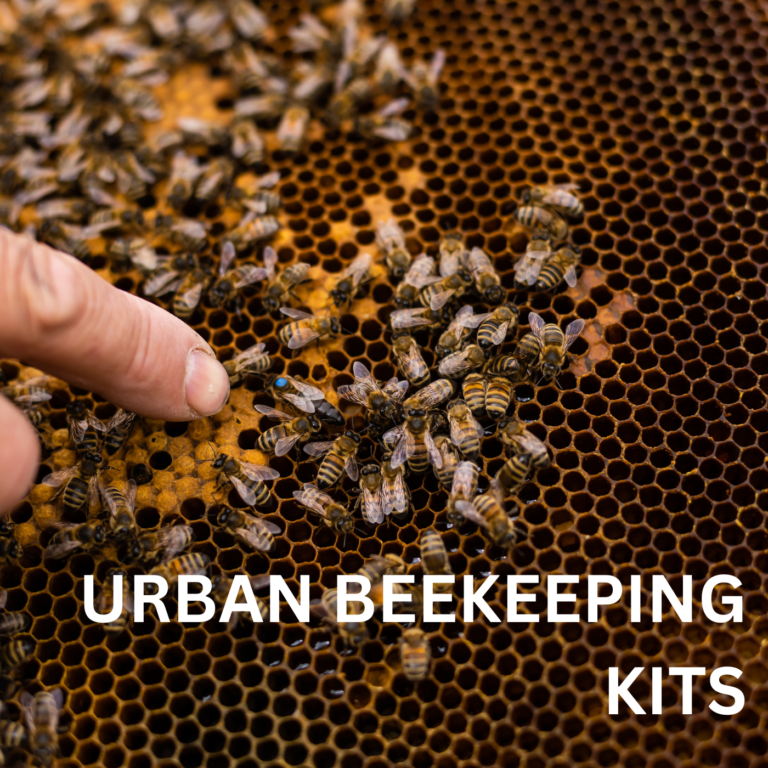Urban Beekeeping Kits: A Buzzing Business Idea for Sustainability and Profit
Urban beekeeping kits are more than just a product—they’re a way to combat declining bee populations, promote sustainability, and offer city dwellers a fulfilling hobby. In recent years, urban beekeeping has gained traction as more people seek ways to reconnect with nature and contribute to environmental health, even in the heart of the city.
By launching a business focused on urban beekeeping kits, you can tap into the growing demand for eco-friendly solutions while making a positive impact on local ecosystems. This article will guide you through the steps to start a successful urban beekeeping kit business, including sourcing materials, educating customers, and marketing your brand.
Why Urban Beekeeping is Important
1. Bee Population Decline
Bees are critical pollinators, responsible for the growth of more than 70% of the world’s crops. However, due to habitat loss, pesticides, and climate change, bee populations have been declining at alarming rates. Urban beekeeping provides a safe haven for bees to thrive, even in densely populated areas.
2. Environmental Benefits
Bees play a vital role in maintaining biodiversity by pollinating urban gardens, parks, and green spaces. Urban beekeeping also encourages city dwellers to adopt more sustainable practices and contribute to a greener environment.
3. Personal Fulfillment
Keeping bees is a rewarding experience. It offers individuals a chance to learn about nature, contribute to conservation efforts, and enjoy the fruits of their labor in the form of fresh, local honey.
Starting an Urban Beekeeping Kit Business
Creating and selling urban beekeeping kits is a scalable, eco-friendly business idea. Follow these steps to establish a thriving business:
Step 1: Research Your Market
Before diving in, understand your target audience and competitors.
- Target Audience:
Urban residents interested in sustainability, gardening enthusiasts, eco-conscious families, and schools. - Competitor Analysis:
Research existing businesses offering beekeeping kits. Identify gaps in their offerings, such as the lack of beginner-friendly kits or educational resources.
Step 2: Design Your Beekeeping Kit
Your kit should include everything a beginner needs to start their urban beekeeping journey. Focus on simplicity and quality.
Key Components to Include:
- Beehive:
A compact, easy-to-assemble hive suitable for small urban spaces like balconies or rooftops. - Protective Gear:
A beginner-friendly suit, gloves, and a veil to ensure safety. - Beekeeping Tools:
Essential items such as a hive tool, smoker, and bee brush. - Starter Colony:
Offer options for sourcing bees, such as a nucleus colony (nuc) or package bees, in collaboration with local apiaries. - Educational Materials:
Include a detailed guide covering:
- Setting up the hive.
- Caring for bees throughout the year.
- Harvesting honey.
- Troubleshooting common issues.
- Eco-Friendly Packaging:
Use sustainable materials for packaging to align with the eco-conscious values of your audience.
Step 3: Collaborate with Local Apiaries
Partner with local beekeepers or apiaries to source healthy bees for your kits. Establishing a relationship with experienced beekeepers can also help you provide expert advice and support to your customers.
Step 4: Set Your Pricing
Determine your pricing based on the cost of materials, sourcing, packaging, and shipping. A basic kit might cost between $150–$300, while premium kits with additional features could go up to $500.
Providing Educational Resources
Education is key to the success of your urban beekeeping kits. Customers need to feel confident and supported in their journey.
What to Include in Educational Resources
- Step-by-Step Manual:
A user-friendly guide that walks beginners through the setup and care process. - Online Tutorials:
Create video tutorials that demonstrate hive assembly, maintenance, and honey harvesting. - Access to Expert Support:
Offer email or live chat support for troubleshooting. - Workshops and Webinars:
Host virtual or in-person events to build a community and educate customers.
Marketing Your Urban Beekeeping Kits
To attract customers and stand out in the market, implement a robust marketing strategy.
1. Build a Strong Online Presence
- Website:
Create a professional website showcasing your kits, educational resources, and the benefits of urban beekeeping. Use SEO-optimized keywords like “urban beekeeping kits,” “how to start beekeeping in the city,” and “eco-friendly beekeeping.” - Social Media:
Share engaging content on platforms like Instagram, Facebook, and TikTok. Ideas include: - Videos of bees in action.
- Success stories from customers.
- Fun facts about bees and their importance.
2. Leverage Email Marketing
Build an email list by offering free resources, such as a downloadable “Beginner’s Guide to Urban Beekeeping.” Use email campaigns to promote new kits, share educational content, and announce events.
3. Partner with Eco-Friendly Brands
Collaborate with brands that share your values, such as sustainable gardening companies or environmental organizations. Joint marketing campaigns can help you reach a broader audience.
4. Attend Farmer’s Markets and Eco Fairs
Set up booths at local events to showcase your kits. Live demonstrations and face-to-face interactions can help build trust and drive sales.
5. Encourage User-Generated Content
Ask satisfied customers to share photos and videos of their urban beekeeping setups on social media. Offer incentives, like discounts or free accessories, for tagging your brand.
Scaling Your Business
Once your urban beekeeping kit business is established, explore ways to expand and diversify:
1. Introduce Advanced Kits
Create kits for experienced beekeepers with additional tools, hive upgrades, or specialty equipment.
2. Offer Subscription Boxes
Provide a subscription service for recurring items like hive maintenance supplies, seasonal care guides, or bee-friendly seeds.
3. Expand Product Lines
Sell complementary products, such as:
- Pollinator-friendly plants and seeds.
- DIY honey packaging kits.
- Bee-inspired merchandise.
4. Develop a Community
Foster a sense of community through forums, social media groups, or membership programs where urban beekeepers can connect, share tips, and learn from each other.
5. Explore Corporate Partnerships
Partner with companies to create urban beekeeping programs for their employees or office rooftops.
Challenges and How to Overcome Them
1. Regulatory Barriers
Check local regulations regarding beekeeping in urban areas. Provide resources to help customers navigate permits or compliance requirements.
2. Customer Concerns
Some potential customers may worry about safety or space limitations. Address these concerns through clear communication and user-friendly designs.
3. Bee Health
Collaborate with experienced beekeepers to ensure the bees you source are healthy and ethically raised.
The Impact of Urban Beekeeping Kits
Launching an urban beekeeping kit business goes beyond profit—it’s an opportunity to make a meaningful impact. By empowering people to become urban beekeepers, you’re helping to:
- Support pollinator populations.
- Educate communities about sustainability.
- Promote greener cities and healthier ecosystems.
Conclusion
Urban beekeeping kits are a powerful way to combine sustainability, education, and business. By offering easy-to-use kits and comprehensive resources, you can inspire individuals to take part in the movement to save the bees while enjoying a rewarding hobby. With thoughtful planning, effective marketing, and a commitment to quality, you can build a successful business that benefits both people and the planet.



